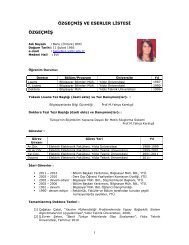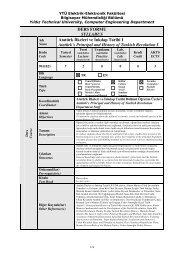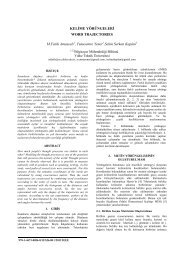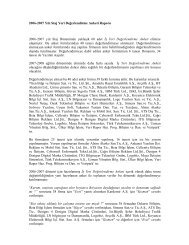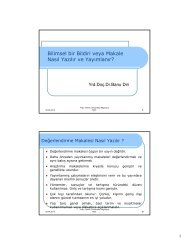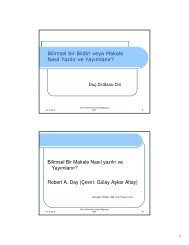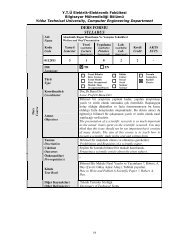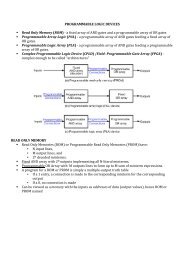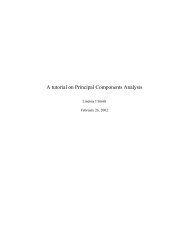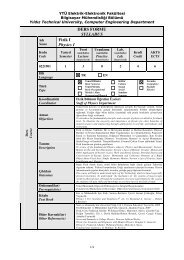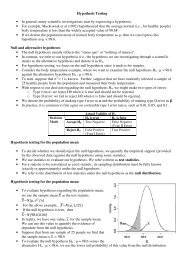Create successful ePaper yourself
Turn your PDF publications into a flip-book with our unique Google optimized e-Paper software.
utilities such as ICKDSF, which allows you to format a<br />
volume.<br />
/V A88,ONLINE Scroll to the bottom and see the results.<br />
/D U,,,A88,2 Check its status; VOLSER is now displayed.<br />
/C U=yourid Cancels a job (your TSO session in this case).<br />
Logon yourid<br />
Log back onto your ID.<br />
More Exercises<br />
1. Find out which IEASYSxx members were used in the current IPL. Did the operator specify the suffix of<br />
an alternate IEASYSxx<br />
2. Did the operator specify any parameter in response to the message SPECIFY SYSTEM PARAMETERS If<br />
the answer is Y, find the related PARMLIB members for that parameter and obtain the parameter<br />
value that would be active if that operator response hadn’t occurred.<br />
3. Do the following:<br />
o On your system, find out the IPL device address and the IPL Volume. Go to SDSF, enter ULOG,<br />
and then /D IPLINFO.<br />
o What is the IODF device address<br />
o What is the LOADxx member that was used for IPL What is the data set that contains this<br />
LOADxx member<br />
o Browse this member; what is the name of the system catalog used by the system<br />
o<br />
o<br />
What is the name of the IODF data set currently used Enter /D I<strong>OS</strong>,CONFIG.<br />
The system parameters can come from a number of PARMLIB data sets. Enter /D PARMLIB.<br />
What are the PARMLIB data sets used by your system<br />
1. Try to log on to TSO after changing the initial logon procedure IKJACCNT to IKJACCN1. The expected<br />
message is:<br />
IKJ56483I THE PROCEDURE NAME IKJACCN1 HAS NOT BEEN AUTHORIZED FOR THIS USERID<br />
2. Using your TSO user ID (now with your default logon procedure IKJACCNT), try to delete the data set<br />
ZPROF.JCL.NOT.DELETE, which is set up by the standard jobs in the supplied JCL. This is a protected<br />
data set and you can only read its content.<br />
3. Execute the next sample JCL to obtain a DSMON utility report with the current RACF group tree<br />
structure (available in the sample JCL as member DSMON):<br />
//DSMONRPT JOB (POK,999),'DSMONREPORT',MSGLEVEL=(1,1),MSGCLASS=X,<br />
// CLASS=A,NOTIFY=&SYSUID<br />
/*JOBPARM SYSAFF=*<br />
//*<br />
//* NOTE:<br />
//* REMEMBER THAT ICHDSM00 MUST BE RUN BY A USER WITH AUDITOR ATTRIBUTE<br />
//*<br />
//STEPNAME EXEC PGM=ICHDSM00<br />
//SYSPRINT DD SYSOUT=A<br />
//SYSUT2 DD SYSOUT=A<br />
//SYSIN DD *<br />
FUNCTION RACGRP<br />
/*<br />
4. Verify that the SYS1.LINKLIB library is an APF-authorized library.<br />
– Using the DISPLAY APF command to display the entire APF list.<br />
– Using the ENTRY= operand in the DISPLAY APF command.<br />
– Using the DSNAME= operand in the DISPLAY APF command. Verify the entry number in the<br />
command display result in the syslog.<br />
5. The following JCL example can be used to invoke the ADRDSSU utility and issue a WTOR message in<br />
the console. The WTOR command lets you write an ADR112A message to the system console. The<br />
ADR112A message requests that the operator perform some action, and then issue a reply. You can<br />
use WTOR, for example, to request that the operator mount a required volume or quiesce a database<br />
before your DFSMSdss job continues to process (available in the sample JCL as member ADRDSSU).<br />
//WTORTEST JOB (POK,999),'USER',MSGLEVEL=(1,1),MSGCLASS=X,<br />
// CLASS=A,NOTIFY=&SYSUID<br />
// EXEC PGM=ADRDSSU<br />
//SYSPRINT DD SYSOUT=*<br />
//SYSIN DD *<br />
13



